Beam Blocks and Traps
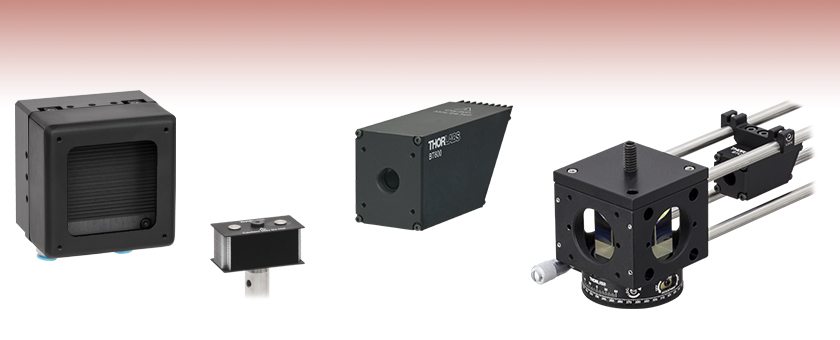
- Beam Blocks and Traps for CW or Pulsed Lasers
- Solutions for up to 500 W
- Essential Component for Laser Lab Safety
LB1
Beam Block,
Visible - NIR
Pulsed and CW
(Post Included)
BT610
Beam Trap,
Pulsed and CW
BTC30
Mounted in
30 mm Cage System
LB2L
Liquid-Cooled Beam Block,
IR Pulsed and CW

Please Wait
| General Specificationsa | |||||
|---|---|---|---|---|---|
| Item # | Laser Input | Wavelength Range |
Max Average Power |
Max Energy Density |
Type |
| BT600(/M) | CW | 200 nm - 3 µm | 80 Wb | 30 mJ/cm2 | Trap |
| BT610(/M) | CW & Pulsed | 400 nm - 2.5 µm | 30 W | 40 J/cm2 c,d | |
| BT620(/M) | CW & Pulsed | 1 - 12 µm | 50 We | 25 J/cm2 c,d | |
| BTC30 | CW | 200 nm - 3 µm | 5 Wf | 30 mJ/cm2 c | |
| LB1(/M) | CW & Pulsed | 400 nm - 2 µm | 10 Wg | N/A | Block |
| LB2(/M) | CW & Pulsed | 1 - 12 µm | 80 Wh | 25 J/cm2 c,d | |
| LB2L(/M) | CW & Pulsed | 1 - 12 µm | 500 Wi | 25 J/cm2 c,d | Liquid-Cooled Block |
Features
- Laser Safety Devices Reduce Risk of Laser Damage
- Solutions for up to 500 W or 40 J/cm2 (10 Hz) Beams
- Models for Wavelengths from 200 nm - 12 µm
- Post, 30 mm Cage, or 60 mm Cage Mounting
Thorlabs' selection of Beam Traps and Beam Blocks are common laser lab safety devices. They are designed to be the terminal piece of an optical system and absorb the incident laser beam. The beam traps that feature both 4-40 taps for integration into a 30 mm cage system and an 8-32 (M4) tap for post mounting are suitable for CW (BT600) or CW and pulsed (BT610 & BT620) beams up to 80 W. The BTC30 quick-release trap is suitable for 5 W CW lasers and can be easily inserted into and removed from existing 30 mm cage systems without disassembly. The LB1(/M) visible and NIR beam block provides a large absorptive target area for pulsed and CW beams up to 10 W. The LB2(/M) and LB2L(/M) IR beam blocks absorb pulsed beams up to 25 J/cm2 and are also compatible with our 60 mm cage systems. The LB2(/M) beam block absorbs CW beams up to 80 W. The LB2L(/M) IR beam block is designed to be liquid cooled, allowing it to handle a maximum average power of 500 W (CW), and has connectors for 1/4" (6 mm) inner diameter tubing.
We also offer light traps and terminators for fiber optic applications.
Laser Safety and Classification
Safe practices and proper usage of safety equipment should be taken into consideration when operating lasers. The eye is susceptible to injury, even from very low levels of laser light. Thorlabs offers a range of laser safety accessories that can be used to reduce the risk of accidents or injuries. Laser emission in the visible and near infrared spectral ranges has the greatest potential for retinal injury, as the cornea and lens are transparent to those wavelengths, and the lens can focus the laser energy onto the retina.
Safe Practices and Light Safety Accessories
- Laser safety eyewear must be worn whenever working with Class 3 or 4 lasers.
- Regardless of laser class, Thorlabs recommends the use of laser safety eyewear whenever working with laser beams with non-negligible powers, since metallic tools such as screwdrivers can accidentally redirect a beam.
- Laser goggles designed for specific wavelengths should be clearly available near laser setups to protect the wearer from unintentional laser reflections.
- Goggles are marked with the wavelength range over which protection is afforded and the minimum optical density within that range.
- Laser Safety Curtains and Laser Safety Fabric shield other parts of the lab from high energy lasers.
- Blackout Materials can prevent direct or reflected light from leaving the experimental setup area.
- Thorlabs' Enclosure Systems can be used to contain optical setups to isolate or minimize laser hazards.
- A fiber-pigtailed laser should always be turned off before connecting it to or disconnecting it from another fiber, especially when the laser is at power levels above 10 mW.
- All beams should be terminated at the edge of the table, and laboratory doors should be closed whenever a laser is in use.
- Do not place laser beams at eye level.
- Carry out experiments on an optical table such that all laser beams travel horizontally.
- Remove unnecessary reflective items such as reflective jewelry (e.g., rings, watches, etc.) while working near the beam path.
- Be aware that lenses and other optical devices may reflect a portion of the incident beam from the front or rear surface.
- Operate a laser at the minimum power necessary for any operation.
- If possible, reduce the output power of a laser during alignment procedures.
- Use beam shutters and filters to reduce the beam power.
- Post appropriate warning signs or labels near laser setups or rooms.
- Use a laser sign with a lightbox if operating Class 3R or 4 lasers (i.e., lasers requiring the use of a safety interlock).
- Do not use Laser Viewing Cards in place of a proper Beam Trap.
Laser Classification
Lasers are categorized into different classes according to their ability to cause eye and other damage. The International Electrotechnical Commission (IEC) is a global organization that prepares and publishes international standards for all electrical, electronic, and related technologies. The IEC document 60825-1 outlines the safety of laser products. A description of each class of laser is given below:
| Class | Description | Warning Label |
|---|---|---|
| 1 | This class of laser is safe under all conditions of normal use, including use with optical instruments for intrabeam viewing. Lasers in this class do not emit radiation at levels that may cause injury during normal operation, and therefore the maximum permissible exposure (MPE) cannot be exceeded. Class 1 lasers can also include enclosed, high-power lasers where exposure to the radiation is not possible without opening or shutting down the laser. |  |
| 1M | Class 1M lasers are safe except when used in conjunction with optical components such as telescopes and microscopes. Lasers belonging to this class emit large-diameter or divergent beams, and the MPE cannot normally be exceeded unless focusing or imaging optics are used to narrow the beam. However, if the beam is refocused, the hazard may be increased and the class may be changed accordingly. |  |
| 2 | Class 2 lasers, which are limited to 1 mW of visible continuous-wave radiation, are safe because the blink reflex will limit the exposure in the eye to 0.25 seconds. This category only applies to visible radiation (400 - 700 nm). |  |
| 2M | Because of the blink reflex, this class of laser is classified as safe as long as the beam is not viewed through optical instruments. This laser class also applies to larger-diameter or diverging laser beams. |  |
| 3R | Class 3R lasers produce visible and invisible light that is hazardous under direct and specular-reflection viewing conditions. Eye injuries may occur if you directly view the beam, especially when using optical instruments. Lasers in this class are considered safe as long as they are handled with restricted beam viewing. The MPE can be exceeded with this class of laser; however, this presents a low risk level to injury. Visible, continuous-wave lasers in this class are limited to 5 mW of output power. |  |
| 3B | Class 3B lasers are hazardous to the eye if exposed directly. Diffuse reflections are usually not harmful, but may be when using higher-power Class 3B lasers. Safe handling of devices in this class includes wearing protective eyewear where direct viewing of the laser beam may occur. Lasers of this class must be equipped with a key switch and a safety interlock; moreover, laser safety signs should be used, such that the laser cannot be used without the safety light turning on. Laser products with power output near the upper range of Class 3B may also cause skin burns. |  |
| 4 | This class of laser may cause damage to the skin, and also to the eye, even from the viewing of diffuse reflections. These hazards may also apply to indirect or non-specular reflections of the beam, even from apparently matte surfaces. Great care must be taken when handling these lasers. They also represent a fire risk, because they may ignite combustible material. Class 4 lasers must be equipped with a key switch and a safety interlock. |  |
| All class 2 lasers (and higher) must display, in addition to the corresponding sign above, this triangular warning sign. |  |
|
| Posted Comments: | |
user
(posted 2024-10-15 13:35:40.033) Can you please give some more information about the warning about graphite in 'some lab environments'. It is not clear to me what the consequences of this are. srydberg
(posted 2024-10-16 10:24:00.0) Thank you for reaching out to us at Thorlabs! I have reached out to you directly to discuss your application. Craig Cahillane
(posted 2024-06-05 18:14:23.373) Would it be possible to replace the TR3 post with a TR2 post? jdelia
(posted 2024-06-06 10:34:19.0) Thank you for contacting Thorlabs. The TR3 is not glued onto the LB1 assembly, so yes, you could simply unscrew it and replace it with a TR2 post. user
(posted 2024-04-04 09:32:27.473) Dear all,
What is the pressure drop of the LB2L/M ? user
(posted 2023-09-26 09:24:41.27) Dear all,
we have an high-power picosecond laser at 355nm (5ps pulses, RR 80MHz, 200mW average power). Can I use the LB1(/M)?
Many thanks cdolbashian
(posted 2023-10-03 01:56:59.0) Thank you for reaching out to us with this inquiry Stefano. Unfortunately we do not have this type of test data. However, since this laser has a low average power, and these heat sinks are meant to diffuse the power of the laser into heat, it is likely that there will be no issue using this component with your laser. For safety purposes, you should validate it in a controlled experiment before implementing into your full experimental design. I have contacted you to share a bit more info regarding this topic. Stefanie M
(posted 2023-01-16 09:31:11.973) Dear Thorlabs team, I am looking for a beam trap for a pulsed tunable laser in the range 210-2600nm. Can I use either BT600 or BT610 for this application? The laser has a 10,000Hz rep rate and 7ns pulse length, below 400nm the pulse energy is 3-8µJ, above 400nm the pulse energy goes up to 75µJ. fnero
(posted 2023-01-27 10:03:27.0) Thank you for your question. As your laser specifications do not exactly meet the specifications for these beam traps, we have reached out to you to discuss your application in detail. Anton R
(posted 2023-01-05 15:13:35.643) I'd love to see SM1/SM2 compatible beam dumps some day. Maybe for low power but with good supression of back scattering. Sergio Rota
(posted 2022-07-01 07:28:39.36) I have a question in reference to this product
I see that the operation range is from 1 to 12 microns
I will use it for bloking IR at 1064nm, but I need to remove at the same time a pulsed signal at 532nm with 10microJules (1MHz, 10W, 1ps).
It is possible with this device?
Thanks jdelia
(posted 2022-07-14 02:38:23.0) Thank you for contacting Thorlabs. I have contacted you directly to discuss your application further. Chaman Gupta
(posted 2022-06-17 00:46:01.83) Can the BT600 be opened or closed?
I work with 1070 nm laser with max. powers of about 70 W. I want to install a beam blocker (or trap/dump) to hold the laser interacting with my sample while I ramp my power, and then let the laser pass through my optical system once I'm at the high power. Any suggestions on parts? cdolbashian
(posted 2022-06-24 02:48:10.0) Thank you for reaching out to us Chaman. The BT600 cannot be opened or closed, but depending on the intensity of your beam, perhaps you can include a shutter, or perhaps a mirror on a flipper mount to have the remote control of the beam path. I have contacted you directly to discuss such options. Weikun Tian
(posted 2021-03-24 14:17:30.373) Hi, I would like to ask can LB1(/M) or LB2(/M) work with 808nm CW laser? YLohia
(posted 2021-03-25 10:53:21.0) Hello, the LB1 can still be used for UV or IR light, but since it does not have the same housing like the LB2 nor is it a "beam trap", the blades stacked together will backscatter and reflect some light. We only spec this for the visible wavelength range because we cannot recommend it for IR light, which is more dangerous when scattered.
The LB2 should be usable to some degree at lower wavelengths (for example 808 nm) than the rated >1 um, but we cannot provide guarantees for using it for this purpose since this is not the design intent of the product. We would expect the temperature to increase more at <1um and thus, the maximum rated power values will be lower for wavelengths below 1 um. Thomas Pinoteau
(posted 2020-12-04 05:29:34.133) Hi, we have a BT620(/M) beam dump and I'd like to know if it would work from 200nm to 1µm with a pulsed laser, and if not, why ?
Thank you in advance.
Thomas YLohia
(posted 2020-12-08 02:19:04.0) Hello Thomas, thank you for contacting Thorlabs. The limits specified for the BT620 are set regarding item integrity and personnel safety.
Due to limitations in our testing capabilities, we do not have any specific test data reaching below 500 nm. The BT620 and BT620/M can be used all the way down to the UV range but we can not guarantee the stated power and energy specifications. The back scatter, on the other hand, will improve due to the material’s higher absorption of shorter wavelengths. Unfortunately, we can’t guarantee the performance of the beam trap since, when it comes to pulsed sources, it needs to be tested with exact same laser parameters. It should work fine, but with reduced power and energy limits. Dirk Poelman
(posted 2020-01-22 16:27:14.353) I would need a beam dump for an OPO (10 Hz, ~ 50 mJ/pulse, 5 ns), starting at 210 nm, up to 2000 nm. I would assume the BT610 cannot be used since it contains a glass filter, but would the BT620 still work (possibly with a lower absorption and higher reflection outside the specified wavelength range)?
Thanks,
Dirk nreusch
(posted 2020-01-30 05:05:47.0) Hello Dirk, thank you for contacting Thorlabs. We have reached out to you directly to discuss the options for your application. Jenny Liu
(posted 2019-09-26 18:27:57.903) We are using LB1/M in our Assy. MKS/Newport requires all components purchased to be 2015 RoHS-compliant now. We need a 2015 RoHS certificate for this part now. Please send it to me. YLohia
(posted 2019-09-27 11:09:13.0) Hello, thank you for contacting Thorlabs. I have reached out to you with the RoHS certification for the LB1/M. user
(posted 2019-05-09 15:14:29.49) I assume the BT620 uses the same graphite dump used in the LB2 since the same wavelength and damage levels are comparable.
Is there any chance you will be coming out with a Beam Trap which can handle the same average power (80W) as the LB2 in a Beam Trap format? I really need a beam trap (so I can eliminate back scatter) that can handle 100 W average power between 1-2 um.
Thanks!
Van YLohia
(posted 2019-05-15 09:42:47.0) Hello Van, yes, the BT620 uses the same graphite that is used in the LB2. The energy limitation is dependent on temperature. The trap can sustain higher power if it's irradiated over a shorter period of time or if it's actively cooled with a TEC on the back. Here, the glue will degrade if the temperature exceeds 200 deg C. Additionally, the anodization will also become discolored. Unfortunately, we are not planning on releasing a higher power version of this at the moment. jos.grooteschaarsberg
(posted 2019-03-04 14:04:12.41) Common anodized aluminum is not "black" absorbing above approximate 750 nm. The specification is up to 3 µm. Do you have a reflectivity graph for the material of this beamdump ? YLohia
(posted 2019-04-05 12:16:58.0) Hello, thank you for contacting Thorlabs. The BT600 would be fine to use at 750nm. We reached out to you with the reflectivity information at the time of the posting of this feedback. ahb
(posted 2018-04-24 10:15:49.75) Is it possible to attach another Optical Posts to the LB1? I think the included post is to long for my project. llamb
(posted 2018-04-24 07:33:02.0) Hello, thank you for contacting Thorlabs. Yes, you can mount any of our posts with a #8-32 setscrew into the LB1. The LB1 includes the 3" long TR3 post, so perhaps our TR1 or TR2 posts would be better for your application. dconnell
(posted 2017-08-14 10:12:57.7) What is the difference between the beam dumps and beam traps? Also, when would one use a Ø1/2" Lens Tube attached directly to the input aperture to shield the laser beam path? What do you mean by shielding the laser beam path? tfrisch
(posted 2017-09-07 09:18:25.0) Hello, thank you for contacting Thorlabs. A beam block is an absorbing surface where as a trap has a small aperture to mitigate scattered light as well. Shielding with a lens tube will help keep anything (like fingers) out of the beam path before it is properly trapped. We will reach out to you directly to discuss your application. azat.sharipov
(posted 2017-05-16 14:09:24.07) Hello, I would like to know which absorptive material is used in LB1M beam block and how sensitive it is to the environment. Is it also possible to disassemble it and take out the absorptive part?
Thanks, Azat nbayconich
(posted 2017-05-31 09:25:59.0) Thank you for contacting Thorlabs. The absorptive materials in the LB1M Beam Block are stainless steel razor blades. It is advised not to remove the absorptive materials in these beam blocks. A techsupport representative will contact you directly. martin.gersing
(posted 2016-10-21 10:50:47.033) Dear Thorlabs,
we would like to use the LB2 Beam Block as a Beam Dump for our measurements. We use a CW Diode-Laser with an average Power of approx. 300W (significantly higher than the stated maximum average Power) however the Beam Diameters are relatively large (ranging from 13mm to 28mm) as it is a collimated Beam. Could we still use the LB2, if we only exposed it to the Laser Beam for a short time with sufficient cooldown phases? jlow
(posted 2016-10-25 08:32:35.0) Response from Jeremy at Thorlabs: You can use this but you need to adjust the exposure time accordingly. If the temperature gets to around 150°C, the anodize aluminum will turn to a brown color due to degradation of the black dye. We also recommend keeping the temperature below 200°C and exposure time of <30 seconds to prevent the graphite plate from damage. martin.gersing
(posted 2016-09-22 13:09:39.8) Dear Thorlabs, is the LB2 Beam Block suitable for absorbing a wavelength of 980nm? jlow
(posted 2016-09-23 02:02:31.0) Response from Jeremy at Thorlabs: Yes, the LB2 beam block will still work at 980nm. kedves
(posted 2015-04-17 09:16:21.733) Dear Thorlabs,
Which beam trap do you recommend for a Ti:Sapphire femtosecond laser beam of 4 W average power, 1 kHz rep. rate, 35 fs pulse width, 800 nm wavelength? Unfocused beam diam. is about 1 cm, with a peak power of about 10^11 W/cm^2, but collimated beams may be factor of 10 smaller in area.
Thanks jlow
(posted 2015-05-04 04:17:56.0) Response from Jeremy at Thorlabs: The BT620 can work at 800nm as well so that's recommended for your case. I will contact you directly about this. c.wedge
(posted 2013-07-16 06:16:43.39) I want to use the BT610/M with a Nd:YAG laser giving 5ns pulses at 20Hz at both 532nm and 355nm. I notice the specifications give a wavelength range of 400nm upwards; is damage likely to result from use in the UV if I remain below the rated power density or will I just get increased back scatter? jlow
(posted 2013-07-17 16:34:00.0) Response from Jeremy at Thorlabs: Unfortunately we do not have complete material data below 400nm for the filter glass used in BT610(/M). However, it is estimated that no damage will occur if used at 355nm below the stated damage threshold. s.greveling
(posted 2013-04-04 04:22:03.153) I want to use the BT600/M for a 1064 nm cw laser with a 20 W output. I want to make sure the convection is at a mininum and notice from the specs that with an input power of 40 W the housing is heated over 100 Degrees. What will the heating be with an input power of 20 W? tcohen
(posted 2013-04-11 10:18:00.0) Response from Tim at Thorlabs: We have not tested at this power, but after modeling this (assuming 25C ambient) we would expect approximately 70C. jlow
(posted 2013-01-18 18:44:00.0) Response from Jeremy at Thorlabs: The LB1 would not function as a beam dump for NIR. It would block the NIR beam but there's nothing to capture the small reflection. lundblad
(posted 2012-12-07 12:24:37.353) Can I use the LB1 as a beamdump for 1064 nm? tcohen
(posted 2012-05-09 11:15:00.0) Response from Tim at Thorlabs: Thank you for your feedback! The 40J/cm^2 value is representative of a 10ns pulse duration at a 10Hz rep rate. Higher rep rates will decrease the max average energy density and past 20Hz CW values should be used. The different operating mechanisms of the BT600 and BT610 make the BT600 more resistant to CW and the BT610 more resilient against pulsed beams. Although 40J/s is 40W, the BT610 is much more suited to take 40J/cm^2 in a 10ns pulse at 10Hz over one second than it is to handle this average power density in CW operation (400W/cm^2). Robert
(posted 2012-05-09 07:26:43.0) Is there a typo in the spec for this? If the beam dump can take 40J/cm2, how come it can only take 15W/cm2 (unless the 40J the total energy for any exposure)? 40 Joules per second would be 40 Watts! Whatever the values are, do they apply to pulses in the nanosecond range? Thorlabs
(posted 2010-08-06 16:22:45.0) Response from Javier at Thorlabs to last poster: Thank you for your feedback. We have no tested the maximum power density that the LB1 can withstand. We would recommend using the 10 W guideline specification conservatively. user
(posted 2010-08-05 10:10:15.0) Hi Thorlabs, for the answer below, what would be the beam dia. for the 10W? Thorlabs
(posted 2010-08-03 19:12:10.0) Response from Javier at Thorlabs to last poster: Thank you for your feedback. We do not have precise data for the damage threshold of the black coating on the LB1. However, you can expect deterioration and damage to the coating once the 10 W maximum recommended input is exceeded. user
(posted 2010-08-03 16:09:57.0) Regarding your LB1, do you have a reference of damage threshold on the black coating? Thorlabs
(posted 2010-07-27 09:46:14.0) Response from Javier at Thorlabs to JMStettler: Thank you for your feedback. The links for the drawings and spec sheets of the beam blocks/traps have been fixed. They should work now. I will send you the specification sheet for the BT510. JMStettler
(posted 2010-07-26 14:47:02.0) The links for the spec sheets (under "Documents and Drawings") for BT510, BT600, and BT610 all seem to be broken. Where can I find this information?
Under "Beam Trap Specs" I can find some information on the BT600 and BT610, but I dont see anything for the BT510. Is this information anywhere on your website?
Thanks,
JS |

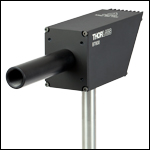
Click to Enlarge
Beam Trap Mounted on a Ø1/2" Post with a Ø1/2" Lens Tube Connected to the Input
- Scatters and Absorbs Laser Beam Energy
- 30 mm Cage System and Ø1/2" Lens Tube Compatible
- 8-32 (M4) Tapped Hole for Post Mounting
Beam traps are common laser lab safety devices that are designed to absorb a laser beam's energy. Versions are offered here that can be used with either CW or pulsed laser beams. Simply align so the beam is directed into the entrance aperture.
These beam traps have internally SM05-threaded input apertures and are 30 mm cage system compatible. A Ø1/2" Lens Tube can be attached directly to the input aperture to shield the laser beam path (see photo to the right). An 8-32 (M4)-tapped hole on the bottom of the beam traps enables post mounting.
Please note that the BT620(/M) contains graphite and may not be suitable for all lab environments. All beam traps will become hot to the touch with beam powers above 10 W.
| Item # | Wavelength Range | Absorptive Material | Laser Type | Max Average Power | Max Average Power Densitya | Max Energy Density | Backscatterb | Entrance Aperture | Max Acceptance Anglec |
|---|---|---|---|---|---|---|---|---|---|
| BT600(/M) | 200 nm - 3 µm | Anodized Aluminum | CW | 80 Wd | 150 W/cm2 | 30 mJ/cm2 | 2 x 10-4 @ 633 nm | Ø0.43" (Ø11 mm) |
±5° |
| BT610(/M) | 400 nm - 2.5 µm | Absorptive Neutral Density Glass |
CW and Pulsed | 30 W | 15 W/cm2 | 40 J/cm2 f | 9 x 10-5 @ 633 nm | ||
| BT620(/M) | 1 - 12 µm | Graphite | CW and Pulsed | 50 We | 25 kW/cm2 | 25 J/cm2 f | 1 x 10-4 @ 633 nm 1 x 10-4 @ 3.39 µm |

- Scatters and Absorbs Laser Beam Energy
- 30 mm Cage System Compatible
- Quick-Release Flexure Clamping Mechanism for Secure Cage Mounting without Disassembly
- Ø8 mm Clear Aperture
Beam traps are common laser lab safety devices designed to absorb laser beam energy. The Quick-Release Beam Trap offered here is optimized to accept CW laser beams of up to 5 W. It is equipped with a flexure-style clamp that snaps onto any two adjacent cage rods of a preassembled 30 mm cage system. To snap the beam trap onto the rods, ensure that the two 4-40 setscrews (0.050" hex) located on the sides of the trap are loose enough to allow the flexure mechanism to snap over the cage rods. Once positioned, these same two setscrews can be tightened to lock the beam trap's position along the rods. For small positional adjustments, slightly loosen the locking screws and slide the device along the cage rods.
Unlike the beam traps sold above, this beam trap is not equipped with a tap for direct post mounting. Caution should be taken when using this beam trap with laser beams above 2 W, as it will become hot to the touch.
| Item # | Wavelength Range | Absorptive Material | Laser Type | Max Average Power | Max Average Power Density | Max Energy Density | Backscattera | Entrance Aperture |
|---|---|---|---|---|---|---|---|---|
| BTC30 | 200 nm - 3 µm | Anodized Aluminum |
CW | 5 Wb | 150 W/cm2 c | 30 mJ/cm2 b | 5 x 10-3 @ 633 nm | Ø0.315" (Ø8 mm) |


Click to Enlarge
The LB1(/M) beam block is engraved with the Item # and a temperature warning.

Click for Details
Base of LB2L Beam Block

Click to Enlarge
LB2L Beam Block with Tubing Connectors
- Visible - NIR Beam Block Absorbs up to 10 W CW or Pulsed
- IR Beam Blocks Absorb up to 25 J/cm2 (Pulsed)
- IR Beam Block with Liquid Cooling Available
- Compatible with our LK220 Liquid Chiller
The LB1(/M) Visible Beam Block absorbs CW or pulsed laser beams over the 400 nm - 2 µm wavelength range. It is recommended for a maximum power of 10 W and is shipped pre-mounted on a 3" (75 mm) long, Ø1/2" post. The post is easily interchangeable with other Ø1/2" posts or Ø1" posts with 8-32 (M4) taps.
Our LB2(/M) and LB2L(/M) Beam Blocks absorb CW and pulsed laser beams over the 1 - 12 µm wavelength range. Each unit features a large 1.97" x 1.97" (50.0 mm x 50.0 mm) entrance aperture with a faceplate serves to protect the graphite pad. These beam blocks have 4-40 taps for integration into our 60 mm cage system.
The LB2(/M) IR Beam Block is recommended for use with average powers that do not exceed 80 W (CW) or energy densities that do not exceed 25 J/cm2 (pulsed; performance of individual units may vary due to material properties). It also offers three 8-32 (M4) taps on one side for mounting to Ø1/2" posts or Ø1" posts. The 1.97" x 1.97" (50.0 mm x 50.0 mm) entrance aperture can be widened to 2.72" x 1.97" (69.0 mm x 50.0 mm) by removing the front faceplate using a 1.5 mm hex key (not included).
The LB2L(/M) Beam Block is designed to be liquid cooled, allowing it to handle a maximum average power of 500 W (CW) when used with a 1 L/min water supply at 25 °C. Similar to the LB2(/M) beam block, it can also be used with pulsed sources with energy densities up to 25 J/cm2 (performance of individual units may vary due to material properties). This block has fittings for 1/4" (6 mm) outer diameter hoses; for example, our HPU6 polyurethane hose is compatible with the LB2L block. The one-touch fittings allow the user to easily push the tubing into the connector when attaching a water or coolant supply such as our LK220 liquid chiller. When used with this chiller, the recommended maximum average power is 250 W (CW). The block can withstand pressure up to 145 psi and can be used with water, ethanol-based coolants, or glycol-based coolants, such as our CDTX Coolant. Each unit offers twelve 8-32 (M4) taps, three on each side, for mounting to Ø1/2" posts or Ø1" posts.
Please note that the LB2(/M) and LB2L(/M) beam blocks contains graphite and may not be suitable for all lab environments. All beam blocks will become hot to the touch with high beam powers.
| Item # | Wavelength Range |
Absorptive Material |
Laser Type | Max Average Power |
Max Average Power Density |
Max Energy Density |
Entrance Aperture |
Operating Temperature Range |
Pressure Rating |
Tubing Outer Diametera |
|---|---|---|---|---|---|---|---|---|---|---|
| LB1(/M) | 400 nm - 2 µm | Steel | CW and Pulsed | 10 Wb | N/A | N/A | 1.40" x 0.70" (35.6 mm x 17.8 mm)c |
N/A | N/A | N/A |
| LB2(/M) | 1 - 12 µm | Graphite | CW and Pulsed | 80 Wd | 25 kW/cm2 e | 25 J/cm2 e,f | 1.97" x 1.97" (50.0 mm x 50.0 mm) |
N/A | N/A | N/A |
| LB2L(/M) | 500 Wg | 25 kW/cm2 | 0 °C to 150 °C | 145 psi | 1/4" (6 mm) |
 Products Home
Products Home
















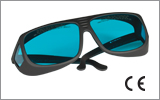
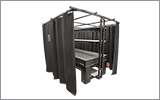
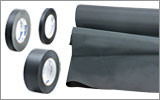
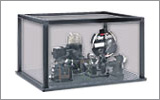
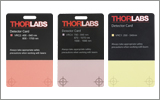
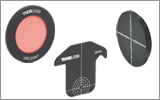
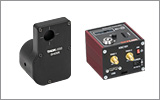
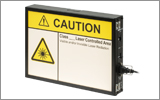
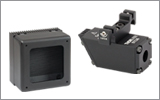
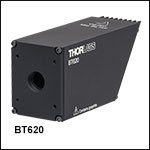
 Zoom
Zoom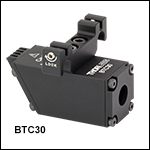
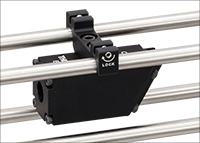
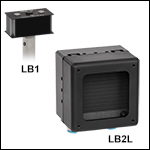
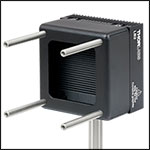
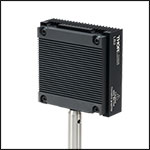
 Beam Blocks / Beam Dumps
Beam Blocks / Beam Dumps